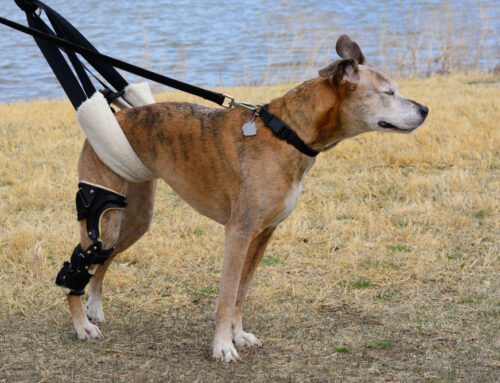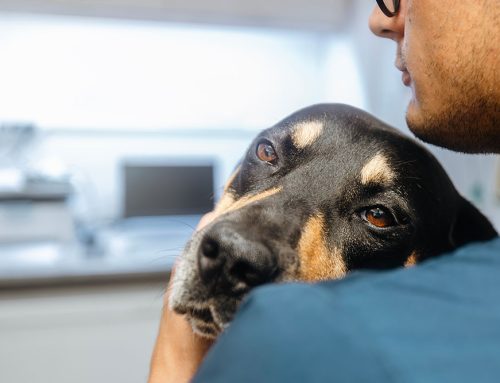Limping Pets: When Same-Day Urgent Care Is the Right Call
Seeing a pet limp, even just a little, can send a wave of worry through any owner’s mind. Is it a minor strain that will pass, or is it a sign of something more serious? Pet owners face tough decisions when a limp appears out of nowhere. At Flora Family Vet in Kissimmee, Florida, the goal is to make these choices clearer, so every pet receives the right level of care at the right time.
What Does Limping Really Mean?
Limping, or lameness, is any abnormality in how a pet moves or stands. It might appear as a slight hesitation when walking, an obvious refusal to bear weight, or a stiff, awkward gait after playtime. Even when pets hide their pain, limping is often the body’s way of signaling that something is not right.
Many pets will push through discomfort to avoid showing weakness. That means an early limp should never be brushed aside. Recognizing when to seek urgent care could make the difference between a simple recovery and a condition that worsens with time.
Common Reasons Pets Limp
The causes of limping vary widely, which can leave pet owners feeling unsure of what’s really going on. Here’s a breakdown of the most frequent culprits:
Injuries and Trauma
Sprains, muscle tears, and fractures are high on the list. Rough play, a jump from furniture, or an unexpected slip on slick flooring can all result in injuries. Some wounds are easy to spot, while others hide beneath fur and muscle.
Learn more about muscle tears in dogs and how they affect mobility.
Joint Problems
Conditions like arthritis and hip dysplasia are more common than many realize. A pet may limp more after naps, during cold weather, or when climbing stairs.
- Arthritis and Degenerative Joint Disease in Cats explains why senior cats are often affected.
- Hip Dysplasia in dogs can develop early in life but may not show signs until adulthood.
Ligament Tears
A torn cranial cruciate ligament (CCL) is among the most common orthopedic injuries in dogs. This ligament stabilizes the knee, and when it tears, it causes sudden limping and pain. Learn more about Canine Cruciate Ligament Injury and why early intervention matters.
Foreign Objects or Infections
Sometimes the cause is as simple as a foxtail, thorn, or piece of glass lodged in a paw. Infections in the bone or joint can also lead to significant pain and swelling. Foxtails pose a serious risk for outdoor pets.
Nail or Pad Injuries
A cracked, torn, or ingrown nail can cause significant discomfort and lead to limping. Even a minor paw pad injury can sideline a pet from normal walks. Explore this article on cracked or torn nails for tips on what to look for.
When to Seek Same-Day Veterinary Care
Not every limp needs urgent attention, but some signs should never wait. Knowing what qualifies as an emergency gives pet owners the confidence to act quickly.
Red Flags That Warrant Same-Day Care
- Sudden inability to bear weight on a limb.
- Visible swelling, heat, or deformity.
- Open wounds, bleeding, or severe bruising.
- Signs of extreme pain like crying out, shaking, or aggression when touched.
- Fever, lethargy, or loss of appetite that appears alongside the limp.
If any of these symptoms are present, contact Flora Family Vet for same-day care. Fast action can prevent further injury and reduce recovery time.
What Happens at a Limping Pet Visit?
Pet owners often feel anxious about what to expect when they arrive at the clinic. A clear process helps ease that stress.
The Evaluation
- Physical Exam: A vet will observe the gait, check each limb, and gently feel joints and muscles for tenderness or instability.
- Imaging: Depending on what the exam shows, X-rays or other diagnostics like an ultrasound or small animal MRI may be needed.
- Additional Tests: If infection or systemic illness is suspected, blood work or fluid sampling from a joint may be recommended.
The Treatment Plan
Treatment depends on the underlying cause and severity. Options may include:
- Rest and Restricted Activity: Essential for sprains or strains.
- Pain Management: Medications to reduce inflammation and discomfort.
- Splinting or Bandaging: Stabilizes fractures or significant soft tissue injuries.
- Surgery: Needed for severe ligament tears or bone fractures. Review more on broken bones in dogs and how they are managed.
- Rehabilitation: Guided exercises help rebuild strength and prevent re-injury. The Mobility Matters Guide is a valuable resource.
Preventive Steps for Joint and Mobility Health
Some injuries are unavoidable, but many can be prevented or managed proactively:
- Keep pets at a healthy weight to reduce joint strain.
- Warm up and cool down before and after high-energy activities. See warm-ups for dogs.
- Trim nails regularly and inspect paws for foreign objects after walks.
- Schedule routine wellness exams. Early detection of arthritis or hip dysplasia often makes treatment easier.
A safe environment also matters. Consider ramps for older pets or non-slip rugs to prevent sudden slips.
FAQs: Limping in Pets
Can a limp just go away on its own? Minor muscle soreness might resolve with rest, but persistent limping should never be ignored.
Is limping always painful? Yes. Even when pets seem happy otherwise, limping signals discomfort.
Can an untreated limp lead to more problems? Yes. Pets may shift weight to other limbs, causing new injuries or worsening joint issues.
What should be brought to a limping visit? A timeline of symptoms, a list of medications, and any videos of how the pet is moving at home are very helpful.
Taking the Next Step
Limping is never just a minor inconvenience- it is your pet’s way of signaling discomfort, and in some cases, urgent pain. Whether the cause is mild or serious, prompt evaluation is key to preventing complications and supporting long-term mobility.
At Flora Family Vet, same-day urgent care appointments and on-site diagnostics are available during open hours to help address sudden changes without delay. The veterinary team partners closely with pet owners to identify the cause of limping and create a clear, personalized treatment plan.
If your pet develops a limp that appears suddenly, worsens quickly, or is accompanied by swelling, vocalization, or unwillingness to move, do not wait. Contact us today to speak with our team or request urgent care. Acting early protects your pet’s comfort, and makes the road to recovery smoother for everyone.









Leave A Comment